Unit Test: Parallel and Intersecting Lines | Mathematics (Ganita Prakash) Class 7 - New NCERT PDF Download
Time: 1 hour
M.M. 30
Attempt all questions.
- Question numbers 1 to 5 carry 1 mark each.
- Question numbers 6 to 8 carry 2 marks each.
- Question numbers 9 to 11 carry 3 marks each.
- Question number 12 & 13 carry 5 marks each.
Directions: Questions 1–5 refer to the figure below. For each given pair of lines, identify whether they are parallel, perpendicular, or intersecting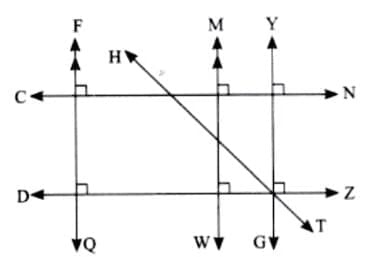
Q1. Lines FQ and HT are ___________ lines. (1 Mark)
Q2. Lines FQ and MW are ___________ lines. (1 Mark)
Q3. Lines CN and FQ are ___________ lines. (1 Mark)
Q4. Lines DZ and YG are ___________ lines. (1 Mark)
Q5. Lines CN and YG are ___________ lines. (1 Mark)
Q6. Write down each pair of adjacent angles shown in the following figure (2 Mark)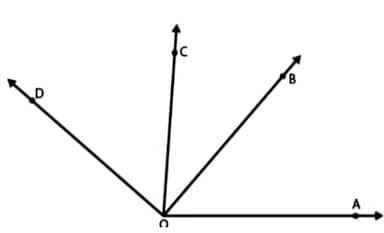
Q7. In given figure, if ∠c is 120°, figure out the measurements of ∠a, ∠b, and ∠d, without drawing and measuring them? (2 Mark)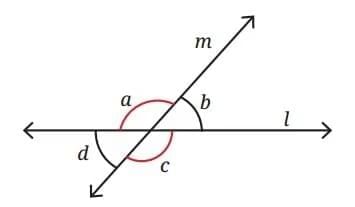
Q8. Two angles form a straight line. One angle measures 102°. What is the other? (2 Mark)
Q9. State which lines are parallel and why? (3 Mark)
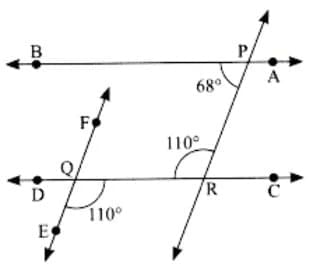
Q10.List all the linear pairs and vertically opposite angles you observe in Figure. (3 Mark)
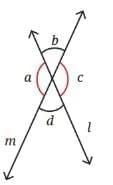
Q11. Find the measure of angle 'a' and angle 'b'. (3 Mark)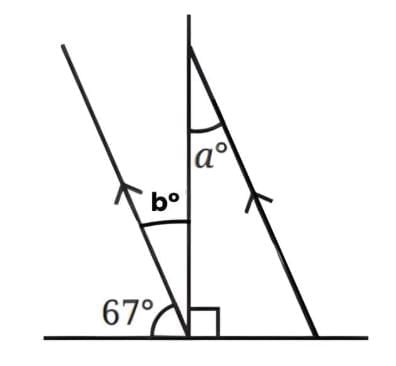
Q12. In the given figure, l || m and t is a transversal. If ∠1 = 55°, find ∠2, ∠3, ∠4, ∠5, ∠6, ∠7 and ∠8. (5 Mark)
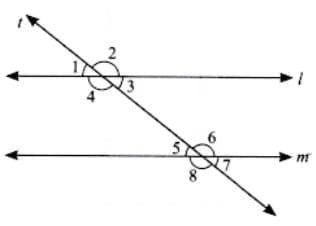
Q13. Find whether the lines AB and CD are parallel or not. (5 Mark)
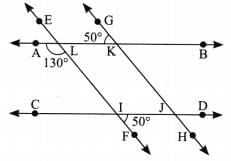
|
41 videos|251 docs|8 tests
|
FAQs on Unit Test: Parallel and Intersecting Lines - Mathematics (Ganita Prakash) Class 7 - New NCERT
| 1. What are parallel lines and how can they be identified? |  |
| 2. What are intersecting lines and what is their significance? |  |
| 3. How can the angles formed by two intersecting lines be classified? |  |
| 4. What is the relationship between parallel lines and transversal lines? |  |
| 5. Why is the concept of parallel and intersecting lines important in real-life applications? |  |

















